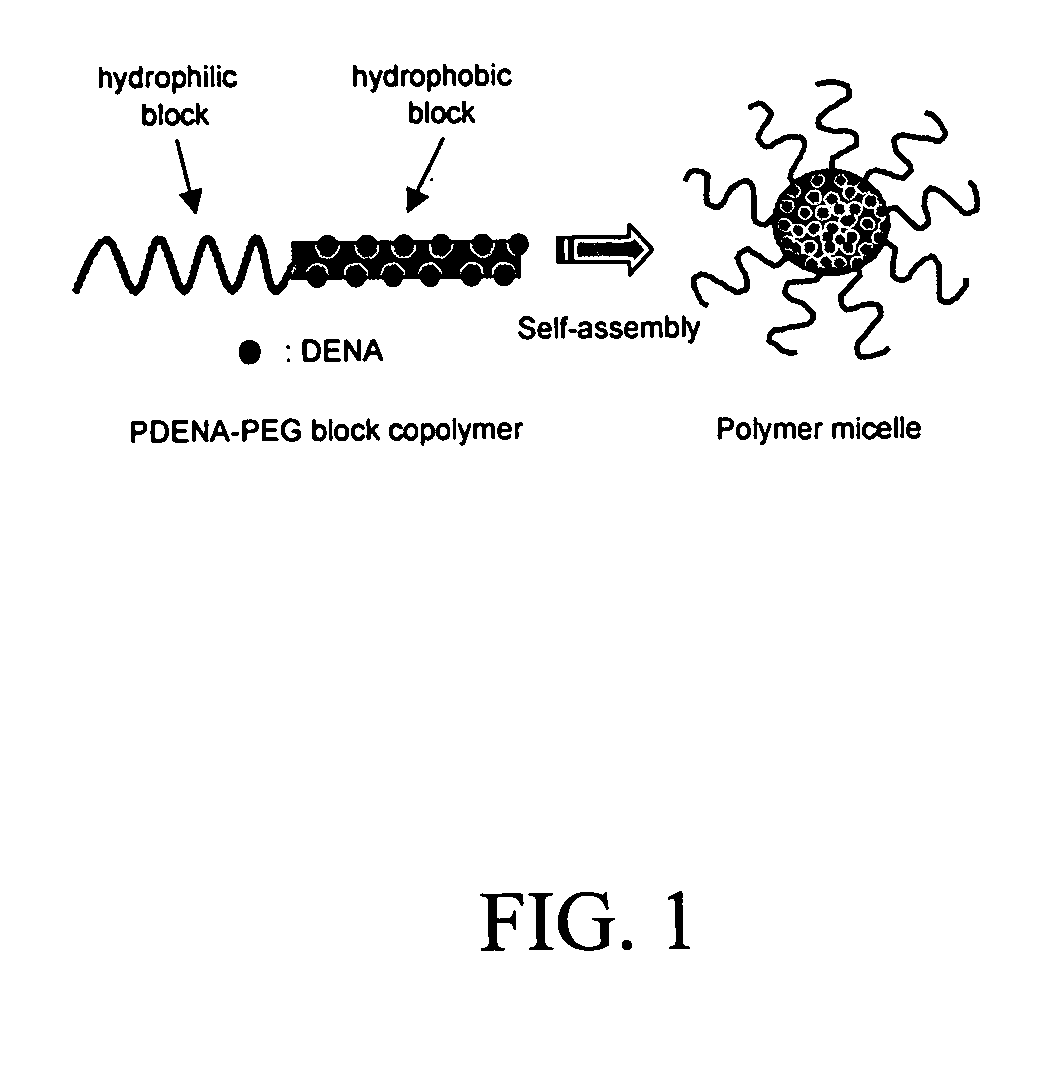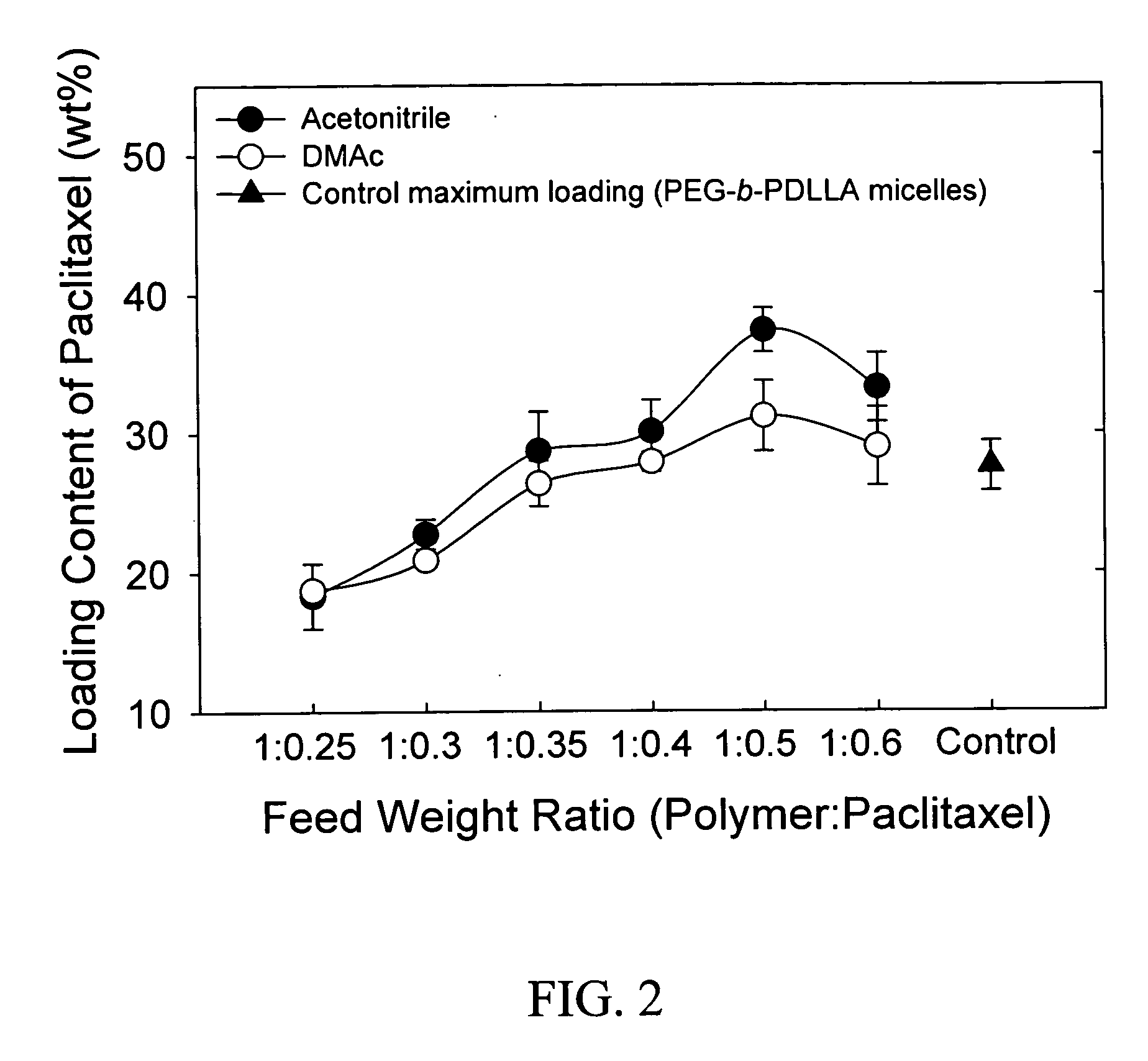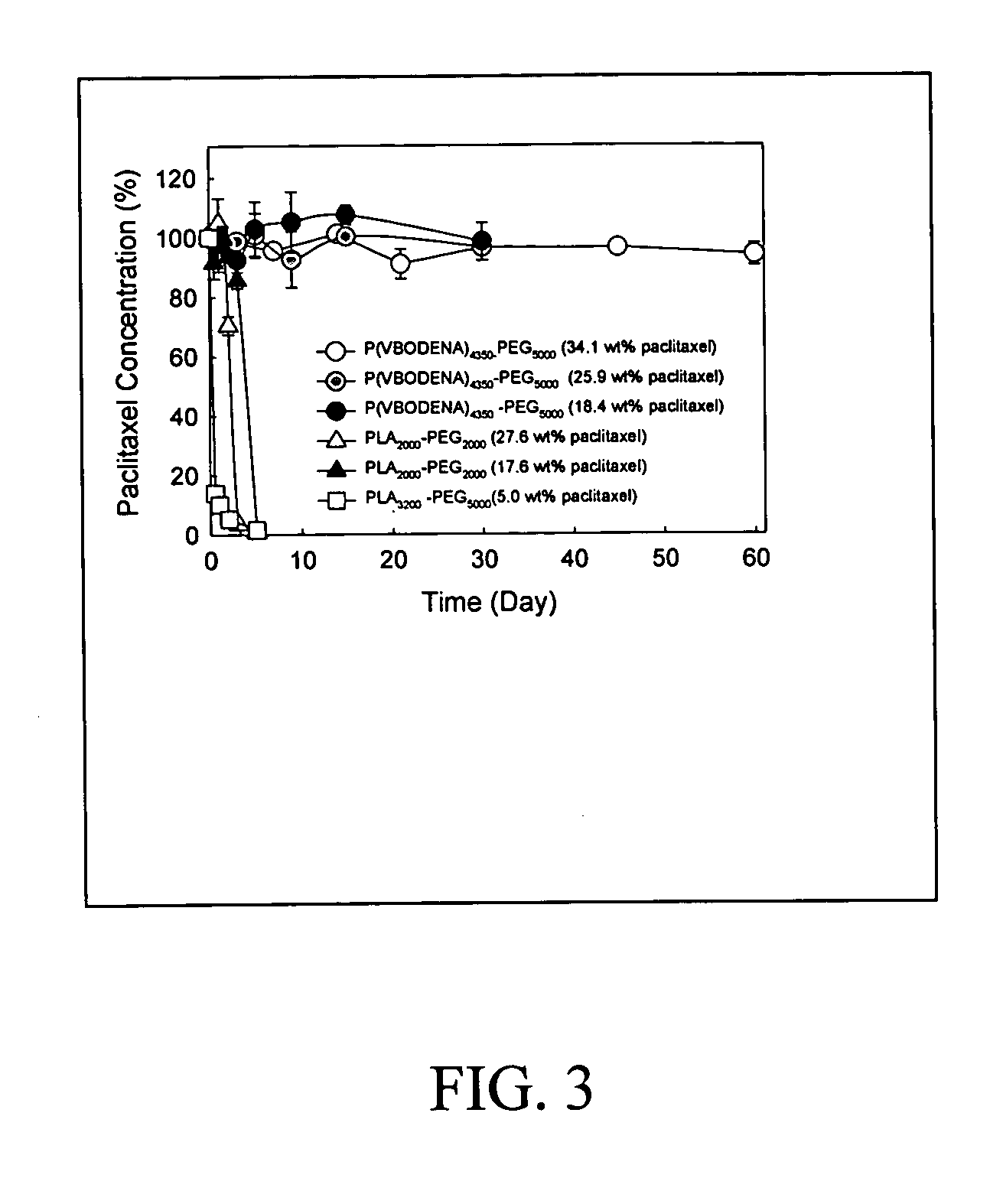Pharmaceutical applications of hydrotropic polymer micelles
- Summary
- Abstract
- Description
- Claims
- Application Information
AI Technical Summary
Benefits of technology
Problems solved by technology
Method used
Image
Examples
example 1
Synthesis of poly(ethylene glycol)-block-poly(2-(4-vinylbenzyloxy)-N,N-diethylnicotinamide)
[0040] An example of the synthesis of a block copolymer of the present invention is for poly(ethylene glycol)-block-poly(2-(4-vinylbenzyloxy)-N,N-diethylnicotinamide) as a model copolymer comprising a PEG block and a hydrotropic polymer block possessing N,N-diethylnicotinamide groups. The overall synthetic scheme for poly(ethylene glycol)-block-poly(2-(4-vinylbenzyloxy)-N,N-diethylnicotinamide) is shown below.
[0041] In the formula, n represents the number of oxyethylene units in the polymer, which is nominally 50000, and m represents the number of hydrotropic monomer units in the hydrotropic polymer, which is nominally 4350 in the example described hereinbelow.
example 2
Synthesis of the PEG macroinitiator (PEG5000-Br)
[0042] A macroinitiator, PEG5000-Br, was synthesized as follows. A solution of PEG5000-OH (10 g, 2 mmol) and TEA (1.42 g, 14 mmol) in dry methylene chloride (50 mL) was placed into the flame-dried two-neck round-bottom flask equipped with a condenser, a dropping funnel, N2 inlet / outlet, and a magnetic stirrer. After cooling to 0° C., 2-bromopropionyl bromide (BPB) (3.02 g, 14 mmol) in dry methylene chloride (10 mL) was then added dropwise to the stirred solution. The reaction mixture was stirred at room temperature under N2 for 24 h. The crude reaction mixture was poured into cold diethyl ether, and the precipitates were filtered and washed with diethyl ether. The crude product was dissolved in methylene chloride (300 mL), and the solution was washed with distilled water (3×50 mL). The organic layer was dried over anhydrous magnesium sulfate and filtered. The PEG macroinitiator, PEG5000-Br, was then isolated by repeated precipitation f
example 3
Synthesis of 2-(4-(vinylbenzyloxy)-N,N-diethylnicotinamide)) (VBODENA)
[0043] VBODENA was prepared by the reaction of 2-hydroxy-N,N-diethylnicotinamide (HDENA) with 4-vinylbenzyl chloride. 4-Vinylbenzyl chloride (5.89 g, 0.038 mol) was added dropwise to the suspension of HDENA (5 g, 0.026 mol) and potassium carbonate (7.12 g, 0.051 mol) in dry acetone (150 mL) at 70° C. The reaction mixture was stirred under nitrogen for 20 h. After the reaction, the crude reaction mixture was filtered, and the product was then isolated by column chromatography with THF / n-hexane on a silica gel. Further purification was performed by recrystallization from THF / n-hexane. Yield 90%.
PUM
| Property | Measurement | Unit |
|---|---|---|
| Amphiphilic | aaaaa | aaaaa |
| Size | aaaaa | aaaaa |
| Solubility (mass) | aaaaa | aaaaa |
Abstract
Description
Claims
Application Information
 Login to view more
Login to view more - R&D Engineer
- R&D Manager
- IP Professional
- Industry Leading Data Capabilities
- Powerful AI technology
- Patent DNA Extraction
Browse by: Latest US Patents, China's latest patents, Technical Efficacy Thesaurus, Application Domain, Technology Topic.
© 2024 PatSnap. All rights reserved.Legal|Privacy policy|Modern Slavery Act Transparency Statement|Sitemap



